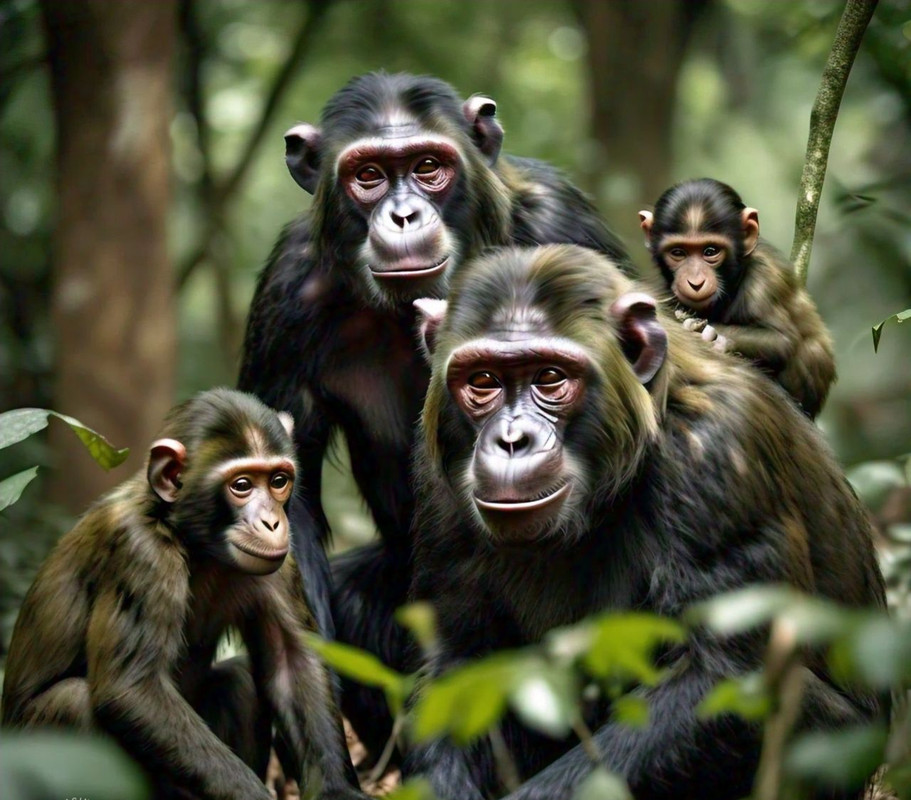Ever Heard of Bonobos?
Ugbomiekon Emmanuel
Bonobos...|| 26 Aug, 2024.

AI generated potrait.
In the heart of the equatorial forests of the Democratic Republic of Congo (DRC) lies a mammal wonder, one so close to almost being human. The Bonobos are the last specie of apes discovered, and while their close physiological relationship with humans is something special, their communal lifestyle of carefree wildlife makes them more intriguing. This is a dissection of what the Bonobos are.
What is a bonobo? According to National geographic, the bonobo is a species of great ape that shares nearly 99 percent of human DNA, just like chimpanzees. These primates, native only to Democratic Republic of the Congo, are often overshadowed by their more well-known chimp cousins. Western scientists often called them the “pygmy chimp” until 1929.
Bonobos are said to differ from chimpanzees behaviorally, but while chimpanzee society is competitive and male-dominated, bonobos live harmoniously in matriarchal groups of up to 100 members. Females hold the highest rank in a group, and the sons of ranking females become leaders among the males. Although males are physically larger and stronger, females gain power through strong bonds and alliances, thereby forming a stable “sisterhood.”
Bonobos are famous for their frequent use of copulation to smooth over disagreements and calm anxious family members. Sexual behavior is predominant in bonobo life. They engage in sexual behavior for a variety of reasons: to form bonds, to neutralize tense situations, to express excitement, to greet one another, to encourage sharing and compassion, and of course, to produce young ones. Despite their frequent sexual activity, bonobos have about the same reproductive rate as chimpanzees, giving birth about every five years. Females usually have their first offspring when they are around 14 years old, after a gestation period of about eight months.
The bonobo’s diet is largely vegetarian. Foraging in small groups, bonobos feast primarily on fruit, but they also eat leaves, flowers, bark, stems, roots, insect larvae, worms, crustaceans, honey, eggs, and soil. Occasionally they hunt small mammals like flying squirrels or duikers (small antelopes). At night, bonobos gather with their groups to nest, communicating with each other with high-pitched barking sounds.
Bonobos are at present endangered species, as reported by the wildlife agency of their local habitat, they are frequently hunted, and baby bonobos are hunted to be kept as pets, therefore, capturing a baby bonobo can lead to the death of as many as six adult bonobos, as reported by national geographic.com - bonobos are on the verge of extinction already.
DON'T FORGET TO LIKE, COMMENT & SHARE
Kolade Philip O.
Editor